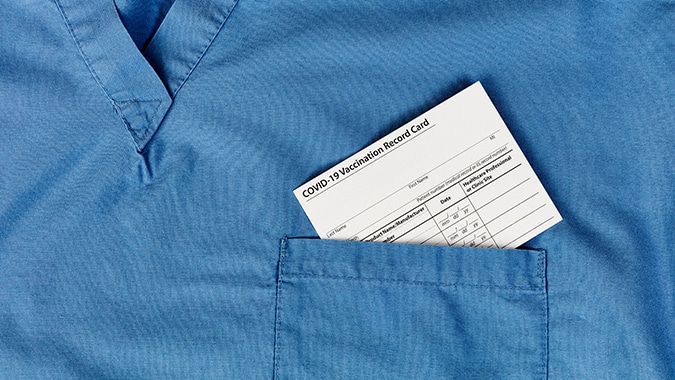Working from home during the COVID-19 crisis has turned our living rooms into makeshift offices, but it hasn’t changed the need for clear and effective business communication – especially now when video conferencing on computers is the new way to connect with colleagues and clients.
Casey Carpenter, founder and CEO of Speak & Own It Communications, drew on her 30 years of experience in corporate leadership and training during a recent NJBIA webcast to provide viewers with strategies for delivering effective presentations that engage audiences — even in the new work-from-home world of virtual meetings where distractions abound.
“Communication is critical,” Carpenter said. “Your words are important, and the way that you deliver them really matters. You have to do it in a way that keeps people focused, keeps them engaged.”
Whether you are standing in a boardroom or at your kitchen table, one strategy is universal – organize your content in a way that provides a clear roadmap so that your listener understands where you are going and how it relates to them, Carpenter said. Make your main point quickly so that your audience understands how everything that comes next in your presentation relates to your main point.
The Army calls this technique a Bottom Line Up Front (BLUF) communication, journalists say don’t bury the lead, but it all means the same thing: Information provided at the start is better understood and retained by your audience, Carpenter said.
“Then you can go ahead and flesh out your main points and use transitions to connect your points,” Carpenter said. “You’re going to tell your listeners where you’re going and give them the context — why this is important and why they care about this.”
When the audience knows why something is important, what their role is, and how it fits into the big picture, you’ve made it much easier for them to be fully engaged in your presentation, Carpenter said.
Delivering a presentation online is challenging because it requires more focused energy to engage an audience through a computer, Carpenter said. Clients and colleagues listening to you are also working from home and easily distracted by children, pets and new emails popping up on their laptop.
Avoid lecturing and instead engage meeting participants so they aren’t tempted to wander off to pour a cup of coffee or throw in a load of laundry. Ask questions that viewers must answer either by using the platform’s chat feature, or by writing a one- or two-word response on a sticky note held up to the webcam for all participants to see in gallery view, she said.
“Change the pace. Slow things down or speed it up to make sure that they are still with you and engaged,” Carpenter said. “If they don’t know what you’re going to do next, they’re going to stick with you. It’s when your presentation is pretty monotone that they think, ‘hey, this is the perfect time to put the kettle on and make some tea.’”
Virtual meetings that allow colleagues and clients to see into your home require you to manage the environment, she said. Tidy up your makeshift work area to look professional and remove family photos, children’s artwork and other personal items from view. An audience distracted by the interior décor and objects around you isn’t paying attention to what you’re saying.
Remember to also “frame your shot,” Carpenter said, by raising your laptop about 4 inches from the table so the top aligns with your hairline. Position yourself in the middle of the frame and light your face evenly with three-point lighting, or a ring light to eliminate distracting shadows.
If you gesture when you speak, be sure your hands can be seen within the webcam frame — otherwise all viewers see are your shoulders inexplicably moving up and down without the hidden hand gestures.
Head off potential bandwidth problems by asking everyone else in your home to stay off their online devices during your virtual business presentation, Carpenter said. Low bandwidth could cause the audio or video to break up while you are speaking.
Carpenter is offering a free online “master class” that takes a deeper dive into creating virtual presentations at 12 noon on Friday, May 1. To register, go here.


